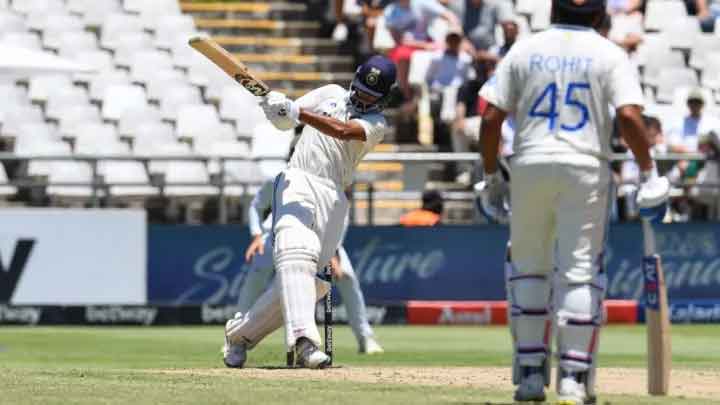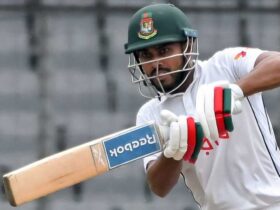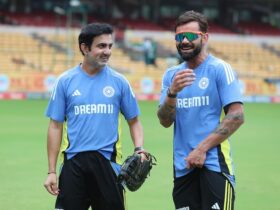There is a pretty cool bunch of people at the top of the list of Indians with the highest strike rates in Test cricket. Only four of the first ten are specialist batters. One of them is Yashasvi Jaiswal.
Players at the top of the order in a game that can go on for five days are meant to try and avoid risk. The lists they would rather be on are most runs, or most hundreds, or best averages. And would you look at that, Jaiswal is there too. He is going to be important for India’s chances in Australia. But he has never faced a challenge like this.
Five Tests. Away from home. Against a bowling attack that has quality, depth, variety and venom.
In a career that is now little over a year old, Jaiswal has had occasion to taste bits of those separately. He played five Tests against England, but that was at home. He faced seam-friendly pitches and rip-snorting bowling in South Africa, but that was just two Tests. The Border-Gavaskar Trophy will combine the worst of those two events together.
India’s training sessions since they landed in Perth earlier this week have been focused on getting their batters used to pace and bounce, to the extent that one of them, KL Rahul, suffered an injury scare, because they know what they are up against. In the last three years, only two countries, where at least two Tests have been played, have been less hospitable for run-scoring than Australia (27.08).

And that is fine. Test-match batting is supposed to be difficult, particularly when the red ball still has its shine. It’s on you to stay out there until it gets soft, and then cash in. Except, over the same period, the batting average against the old ball in Australia – assuming it starts to get old after 30 overs of wear and tear – is almost identical to the batting average against the new ball: 27.81 vs 26.64.
That may be testament to the discipline of Australia’s bowling attack, and how well they function together. Jaiswal hasn’t really had a chance to face any of them, barring a few balls here and there in the IPL. He is going to have to do a lot of learning on the job, which began in earnest on Tuesday when he joined India A’s net sessions at the WACA, and hit one so hard and so far that the ball ended up on the street outside the ground. It seems he is comfortable that the methods he has been using so far don’t need too much fiddling. There are others who share the same opinion.
They stray, he flays: Yashasvi Jaiswal could be key in Australia Associated Press
“He has the ammunition. He has the game to do well in Australia,” former India batter Sanjay Manjrekar said on his ESPNcricinfo’s Straight Talk.
Give Jaiswal half a chance to play an attacking shot and he will, whether it’s the first ball of the innings, or the second one in a chase. Put him in front of someone who is approaching 700 wickets or someone else who gets it up to 150kph, it’s all the same. They stray, he flays. That’s why a 22-year-old is shaping up as one of India’s most important players on a tour that is going to be long and tough, and lousy with consequence. Even the Australians know it.
“He’s scored runs very quickly, but he hasn’t made a mistake. He hasn’t really given the opposition a chance to be able to get him out,” former allrounder Shane Watson said. This was pre-New Zealand though, when Watson was answering a question about whether India will miss someone who is capable of batting time and absorbing pressure, like Cheteshwar Pujara.
“I think if those type of batters come out to Australia and play aggressively – just put the bad balls away and put pressure on the Aussie bowlers – then they can still have the same effect, and they keep the game moving as well.”
Yashasvi Jaiswal perhaps has work to do in terms of shot selection when the ball is in an in-between length AFP/Getty Images
With 10 of his 14 Tests have come at home, there has been a pattern to Jaiswal’s run-scoring – 902 have come against spin at an average of 75.16, and the remaining 505 have come against seam at an average of 38.84. He likes to take on short-pitched bowling, which he showed once again in a match simulation setting against India A in Perth. But there is perhaps some work to do in terms of shot selection when the ball is in an in-between length. It accounts for seven








Leave a Reply